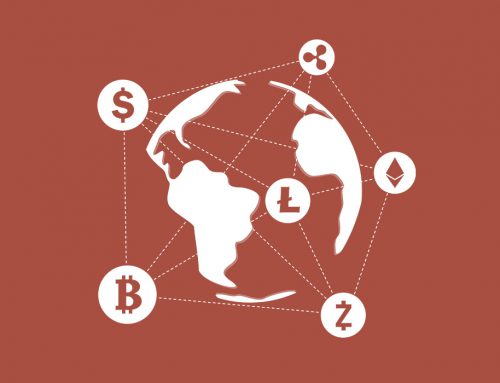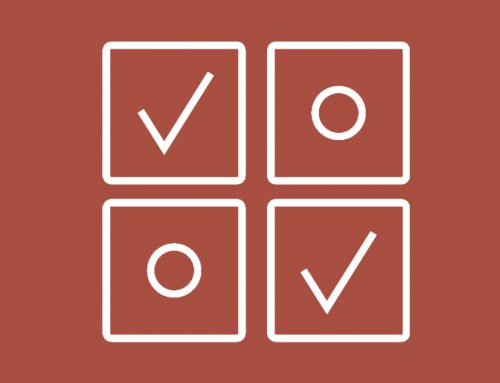Non-Cooperative Games
Games are considered Non-Cooperative when there is no element of cooperation between the agents involved. The analysis of competitive games forms the foundation and origins of classical game theory, as they are greatly more amenable to the tools of standard mathematical modeling compared to cooperative games
In game theory, a primary distinction is made between those game structures that are cooperative and those that are non-cooperative. The fundamental dynamics surrounding the whole game are altered as we go from games whose structure is innately competitive to those games where cooperation is the default position. A cooperative game is one wherein the agents are able to resort to some institution or third party in order to enable cooperation and optimal results for all. A game is non-cooperative if players cannot form the structures required to enable cooperation or if there is no incentive for them to do so, because of the nature of the game they are playing. The term “noncooperative” means this branch of game theory explicitly models the process of players making choices out of their own interest, without reference to the overall outcomes of the game.1
For example, we might think about two people wishing to make a commercial transaction online. Given two anonymous people interacting without some institution to enable cooperation, there is no reason for either to think that the other will carry through with the transaction as promised. The seller is incentivised to take the money and not send the item while the buyer is likewise incentivised to take the product without sending the money. In the absence of some cooperative structure that would enable each party to trust the other and thus cooperate, the game would naturally gravitate towards defection and the potentially valuable transaction would not take place.
Thus we can see how in the absence of cooperative mechanisms each player may follow the course that renders them the best payoff without regard for what the other does, or what is optimal for the overall system and this can result in suboptimal outcomes for all.2 In noncooperative games, each agent in the game is assumed to act in their self-interest, and this self-interested agent is the primary unit of analysis within non-cooperative games because there is no cooperative structure. This is in contrast to cooperative game theory that treats groups or subgroups of agents as the unit of analysis and assumes they can achieve certain outcomes among themselves through binding cooperative agreements.3
Game theory historically has been very much focused on noncooperative games and trying to find optimal strategies within such a context. This is likely because noncooperative games are very much amenable to our standard mathematical framework and thus offer nice closed form solutions.4 But it is important to note that the real world is made up of situations that are sometimes cooperative, sometimes noncooperative, and often involve elements of both.
Factors of Noncooperation
Situations that involve excludable and rivalrous resources create inherent attractors towards dynamics of competition, such as the occupation of territory and the ensuing territorial conflict between animals
Non-cooperative games arise due to a number of factors. Firstly the game may be inherently zero-sum meaning what one wins the other loses and thus there is an inherent dynamic of competition. Many sports games are specifically designed to be zero-sum in their structure, so as to create a dynamic of competition. In such a case there is only one prize and if someone else gets it you do not. There is no incentive for cooperation and every incentive for competition and thus the best option is for the actor to focus on maximizing their payoff irrespective of all else. This is called a strictly competitive game. A strictly competitive game is a game in which the interests of each player are diametrically opposed.5
Likewise, a game may be non-competitive due to the incapacity to create cooperative structures. Most people, when engaged in a game, will wish to not only optimize their own payoff but will wish to optimize the overall outcome as well. In general, people do not like the idea of waste or of unfairness and we typically search for some optimal solution given both our own interests and some consideration for the overall organization. The real world of social interaction is full of all sorts of informal social and cultural institutions designed to enable trust, cooperation and optimal outcomes for all.6 Almost as soon as two people start to interact they will start to look for commonalities and shared interests that enable them to develop trust and cooperation. Thus non-cooperative games are typically those where the actors can not interact and form the trust required for cooperation. The prisoner’s dilemma where the two suspects are taken into separate rooms is a good example of this.
Lastly non-cooperative games can be a product of an incapacity to enforce binding contracts. If there is a third party involved to ensure optimal outcomes for the overall organization through sanctions and incentives, this can form a solid basis for cooperation - in the way that a government does by enforcing laws. This is famously captured in Thomas Hobbes’ conception of the state of nature. Where he pondered “What was life like before civil society?” he went on to write “during the time men live without a common power to keep them all in awe, they are in that condition which is called war; and such a war as is of every man against every man.” In this state, every person has a natural right or liberty to do anything one thinks necessary for preserving one’s own life. Hobbes’ ideas illustrate vividly how in the absence of a third party to enforce cooperation, competition can prevail.7
Equilibrium Analysis
Because games without cooperation involve each agent trying solely to optimize their own playoff given what the other is doing they will result in some form of equilibrium, a point of stasis where each is playing their best strategy. Finding such points of equilibrium is the central aim of the study of noncooperative game theory.
Non-cooperative games create a specific dynamic within a game, where we are taking the individual and their payoff as the basic unit of analysis. In such a circumstance we do not need to consider what is best for all if given some form of cooperation because this is not possible within the context. We are solely interested in how the individuals will act. The question of how should they act to optimize their own payoff, and given the assumption that both are performing this optimization what will be a stable solution to the game. Given these assumptions engendered in non-cooperative games, we should be able to make certain predictions about how games will play out. Given these assumptions, both players should search for a strategy that optimizes their payoff, and where those strategies of the players interact we should have a stable outcome, that we should be able to predict will occur.8
This stable outcome is what we call an equilibrium. Where equilibrium in the general sense means a state in which opposing forces are balanced, thus creating a point of stability and stasis.9 When we see a ball at the bottom of a bowl it is in a state of equilibrium, because if we put it anywhere else in the bowl the force of gravity would act on it to pull it back to this static point. This is the same for the actors in a non-cooperative game because they are both trying to optimize their payoff they will both naturally gravitate towards the strategy that gives them the highest payoff. But because their payoff is dependent on what strategy the other chooses and because they can not depend upon cooperation between them, they have to choose the best strategy assuming that the other will work to optimize their payoff without cooperating.
This point of equilibrium in a game is called the Nash equilibrium after the famous mathematician John Mash. In game theory, the Nash equilibrium is a solution concept of a non-cooperative game involving two or more players in which each player is assumed to know the equilibrium strategies of the other players, and no player has anything to gain by changing only his or her own strategy.10 If each player has chosen a strategy and no player can benefit by changing strategies while the other players keep theirs unchanged, then the current set of strategy choices and the corresponding payoffs constitutes a Nash equilibrium. The Nash equilibrium is one of the foundational concepts in game theory. The basic intuition of the Nash equilibrium is in predicting what others will do given their self-interest only and then choosing your optimal strategy given that assumption. Nash equilibrium is a point where all players are doing their best given the absence of cooperation. A nash equilibrium is a law that no one would want to change in the absence of some effective overall structure for coordination.
Prisoners Game
Illustration of the payoff matrix for the classical game of the prisoner’s dilemma
Nash equilibrium is best illustrated through the prisoner’s dilemma game. The prisoner’s dilemma game is a classic two player game that is often used to present the concept of nash equilibrium in a payoff matrix form. Conceive of two prisoners detained in separate cells, interrogated simultaneously and offered deals in the form of lighter jail sentences for betraying the other criminal. They have the option to “cooperate” with the other prisoner by not telling on them, or “defect” by betraying the other. However, if both players defect, then they will both serve a longer sentence than if neither said anything. Lower jail sentences are here interpreted as higher payoffs (shown in the table).
The prisoner’s dilemma has a similar matrix as depicted in the coordination game, but the maximum reward for each player is obtained only when the players’ decisions are different. Each player improves their own situation by switching from “cooperating” to “defecting”, given the knowledge that the other player’s best decision is to “defect”. The prisoner’s dilemma thus has a single Nash equilibrium: where both players choose to defect. What has long made this an interesting case to study is the fact that this scenario is globally inferior to “both cooperating”. That is, both players would be better off if they both chose to “cooperate” instead of both choosing to defect. However, each player could improve their own situation by breaking the mutual cooperation, no matter how the other player changes their decision.
Prediction
The central aim of non-cooperative game theory then is in trying to predict people’s actions within a game by finding the nash equilibria and assuming they will play that because it is their best option. It is then legitimate for us to ask does equilibrium analysis give us any predictive capacity over what happens in the real world. Often the outcome of experiments is not an equilibrium as predicted by the theory. This is mainly because people do not fully reason through the game in a fully logically consistent fashion.11
Equilibrium is a point where everyone has figured out what everyone else will do, thus behaviorally it often does not predict what people will do the first time they play the game. Equilibrium should more be interpreted as what will happen over a number of iterations within a non-cooperative game, as players come to better understand the game and how to reason through it.12 Similar to putting a ball in a bowl, it takes time before it arrives at an equilibrium and this is what is seen in game experiments they tend over time towards the equilibrium.
For example in a game people are asked to choose a number between 0 to 100, with the winner being the person who is able to guess what will be 2/3 of the average figure proposed by others. So everyone is being asked to guess a bit below the average number proposed. In this game, only a small percentage choose the equilibrium point - which is zero - and because other people did not act rationally in this game they were wrong.13 In many ways then choosing this equilibrium as a prediction of what would happen is not a good option, and this clearly diverges dramatically from what the theory tells us. However, overtime, as the game is iterated upon the numbers chosen by people does move towards the equilibrium. Thus it tells us something about statistical averages of the system but not very much about how it will behave in the real world the first iteration of the game.
1. (2017). Cdam.lse.ac.uk. Retrieved 13 May 2017, from http://www.cdam.lse.ac.uk/Reports/Files/cdam-2001-09.pdf 2. Encyclopedia of the Mind. (2017). Google Books. Retrieved 13 May 2017, from https://goo.gl/2fLo2A 3. (2017). Spot.colorado.edu. Retrieved 13 May 2017, from http://spot.colorado.edu/~cheny/course/phdmicro/topic2.pdf 4.(1996) Roger B. Myerson. Nash Equilibrium and the History of Economic Theory. Retrieved 13 May 2017 https://goo.gl/qDuVUS 5. (2017). Homepages.cwi.nl. Retrieved 13 May 2017, from http://homepages.cwi.nl/~apt/stra/ch6.pdf 6. (2017). Wtf.tw. Retrieved 13 May 2017, from http://wtf.tw/ref/ostrom_1990.pdf 7. (2017). Socserv2.socsci.mcmaster.ca. Retrieved 13 May 2017, from https://socserv2.socsci.mcmaster.ca/econ/ugcm/3ll3/hobbes/Leviathan.pdf 8. (2017). Lakeheadu.ca. Retrieved 13 May 2017, from https://goo.gl/51HJhf 9. Definition of EQUILIBRIUM. (2017). Merriam-webster.com. Retrieved 13 May 2017, from https://www.merriam-webster.com/dictionary/equilibrium 10. Game Theory Applications in Network Design. (2017). Google Books. Retrieved 13 May 2017, from https://goo.gl/a44khD 11. (2017). Innovbfa.viabloga.com. Retrieved 13 May 2017, from http://innovbfa.viabloga.com/files/Herbert_Simon___theories_of_bounded_rationality___1972.pdf 12. Goeree, J., & Holt, C. (1999). Stochastic game theory: For playing games, not just for doing theory. Proceedings Of The National Academy Of Sciences, 96(19), 10564-10567. doi:10.1073/pnas.96.19.10564 13. Duffy, J., & Nagel, R. (1997). ON THE ROBUSTNESS OF BEHAVIOUR IN EXPERIMENTAL ‘BEAUTY CONTEST’ GAMES*. The Economic Journal, 107(445), 1684-1700. doi:10.1111/j.1468-0297.1997.tb00075.x










